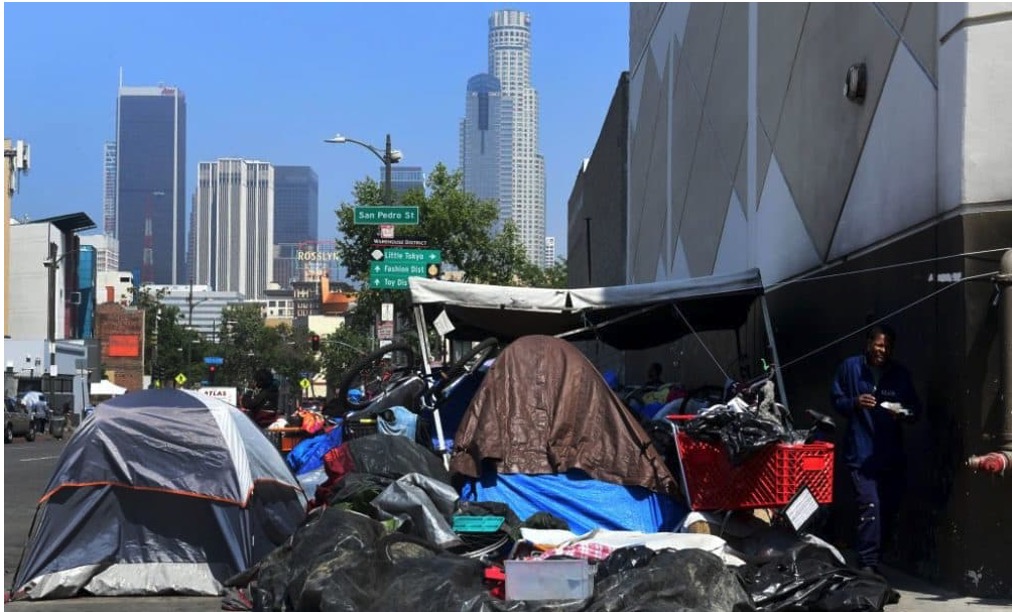Comments
PLANNING WATCH - Despite elaborate and well-funded City and County homeless programs, homelessness continues its relentless rise in Los Angeles. The Los Angeles Homeless Services Authority (LAHSA) annual homeless count for 2023 documented a 9 percent increase in LA County over 2022, plus a 10 percent increase in the city of Los Angeles.
What is going on, despite the major efforts that both the City and County are making? My CityWatchLA colleague, Tim Campbell, has offered an explanation: administrative screw-ups in both City and county homeless programs. This is part of what he wrote in last week's CityWatchLA.
“The City budgeted $255 million for Inside Safe in fiscal year 2023-24, and the City Council routinely rubber stamps new expenditures whenever the Mayor’s Office makes a request. This despite the Mayor’s failure to provide promised periodic updates until the late Spring of 2023—reports that indicated barely 1,000 people had been housed by that time. Even now that reports are made more regularly, the numbers are virtually meaningless. Last August, leaders threw a management analyst under the bus, making him admit to the City Council that LAHSA doesn’t always know when someone leaves an Inside Safe room. Councilmember Monica Rodriguez called the program “the merry-go-round from Hell,” and Bob Blumenfeld said LAHSA’s funding should be reviewed given its poor performance. Yet the flow of money continues unabated.”
While Tim Campbell’s critique is spot-on, I doubt that well-run local homeless services would make a qualitative difference. The number of homeless people might be slightly lower, but the overall trend of increasing homelessness since 2011 would continue because of:
- Evictions: Legal evictions are increasing in Los Angeles as the Covid 19 Pandemic relief programs wind-down. According to the Los Angeles Times, despite new tenant protections, local landlords filed 46,000 eviction cases in 2023, the highest number in a decade. Furthermore, under-the-table evictions, politely called cash for keys, have continued. When done legally through the Ellis Act, the Coalition for Economic Survival has documented 29,714 cases since 2001. The number of Non-Ellis Act evictions, when landlords bribe tenants to disappear, are unknown.

- Rent increases: In LA City and County, as well as the State of California, the cost of housing has continued to increase faster than wages, pricing many people out of housing. Those who can’t couch-surf or move to cheaper housing markets end up homeless. Furthermore, increased housing costs are not just a barrier in Los Angeles. Cal Matters reports that homelessness is also rising throughout California, a direct result of rising housing costs.
In Los Angeles, City Hall supports two other real estate rep-offs that raise housing prices and increase homelessness. First, in Los Angeles about 40,000 middle income homes have been demolished over the past 20 years, nearly all replaced with expensive McMansions. Second, as shown on the LA Development Map, Los Angeles is now covered with new high-rise apartments. Like McMansions, these new apartments replace older, less expensive units, and therefore raise housing prices. While great for investors, it is a hellscape for tenants, some of whom end up homeless.
- Public housing programs were eliminated between 1971 and the 1990’s, whether funded by local redevelopment agencies (CRA) or the federal Department of Housing and Urban Development (HUD). Had they continued, there would now be one million more non-market low income housing units in the US. This is far more than the country’s nightly count of 650,000 homeless people.

An experimental California program to reduce homelessness gave the unhoused $750 per month. This was enough for most of them to find a place to live. If scaled up from the state to the national level, this approach would cost $6 billion per year. This is five percent of the $115 billion that Congress and the White House have so far gifted to the Ukrainian government. It is also about one-third of the $14 billion that the Biden Administration proposes for more US weapon shipments to Israel, so it can continue its attacks on Gaza’s infrastructure and people.
Until these underlying causes are addressed, tweaks to local homeless programs, like Inside Safe, won’t eliminate homelessness. But they are a boon for the expanding budgets of local homeless agencies, and an even greater windfall for the real estate speculators whose business models remain in place and cause homelessness to rise.
(Dick Platkin is a retired Los Angeles city planner who reports on local planning issues for CityWatchLA. He is a board member of United Neighborhoods for Los Angeles (UN4LA). Previous columns are available at the CityWatchLA archives. Please send questions to [email protected].)














